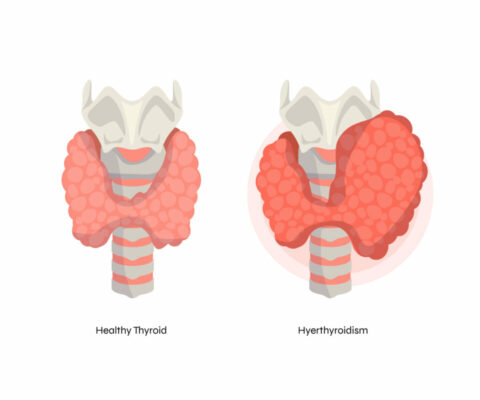
Why Omega is Important for Reversing Type II Diabetes
An ongoing metabolic condition known as type II diabetes causes high blood glucose levels as a result of reduced insulin production and insulin resistance as well as potential underlining issues. It is a significant global public health issue. Omega-3 fatty acids may be beneficial to people with type II diabetes, according to recent studies, even if the underling causes are not being addressed.
The management of a healthy lifestyle is significantly aided by omega-3 fatty acids, which may be found in several meals and supplements. This article analyzes the significance of omega-3 for people with type II diabetes, looking at the research, possible processes, and useful suggestions.
Understanding Type II Diabetes, its Prevalence, Risk Factors, Complications, and Omega-3 Fatty Acids
Type II diabetes is a common and possibly dangerous medical disease that is characterized by elevated blood sugar levels. The goal of this article is to provide a thorough review of Type II diabetes, including its prevalence, major risk factors, complications, and the function of omega-3 fatty acids to aid in health. Original solutions that explore the intricacies of this illness, such as its frequency, significant risk factors, and the numerous difficulties it implies, is where Dr. Spages excels. Additionally, he emphasizes the importance of omega-3 fatty acids in the support of proper health especially for Type II diabetics.
Type II Diabetes and its Prevalence
The metabolic illness known as type II diabetes, commonly referred to as adult-onset diabetes, impairs the body’s capacity to control blood sugar (glucose) levels. In this kind of diabetes, the body either produces insufficient insulin or uses it inefficiently. It accounts for the majority of cases of diabetes globally and is the most prevalent kind.
Over the last several decades, Type II diabetes has slowly become more common. Elements including sedentary lifestyles, unhealthy eating patterns, and an aging population bring on this increase as well as no getting to the root cause of what is driving the sugars higher. Approximately 463 million individuals (aged 20 to 79) had diabetes in 2019, with Type II diabetes accounting for the bulk of cases, according to the International Diabetes Federation.
Key Risk Factors
Obesity
One of the main risk factors for Type II diabetes is obesity. Excess body fat, especially in the abdominal area, may cause insulin resistance, which makes it challenging for cells to utilize insulin efficiently. Dr Spages talks about this in length in other blog posts on this site.
Family background
The onset of Type II diabetes is not influenced by genetics. The genome project showed there is no gene in our DNA that causes diabetes. Please see Is Type II Diabetes Genetic?
Lack of movement
Type II diabetes has a substantial correlation with physical inactivity. Maintaining a healthy weight and enhancing insulin sensitivity are both benefits of regular exercise. There are some patients Dr Spages, after looking at comprehensive labs, tells not to exercise.
Bad diet
A diet heavy in processed foods, sugary drinks, and bad fats may accelerate increased sugar levels. To reduce the risk, a diet high in protein, fruits, and vegetables is advised. This is a good recipe guide for the basics of balancing blood sugar.
Age
Age raises the incidence of Type II diabetes, particularly beyond the age of 45. This could be possibly avoided if someone is working with a healthcare professional that is building health instead of just treating symptoms.
Complications
Acute and long-term consequences from type II diabetes may take many different forms. The following are some of the most typical complications:
Heart and Vascular Issues
Diabetes type II patients are more likely to get heart attacks and strokes as a result of heart disease. The sad part is that this even happens while being on medication that is designed to prevent it.
Nerve Injury
Especially in the limbs, high blood sugar levels may harm nerves, causing pain, numbness, and tingling.
Nephropathy, a kidney condition. Dr Spages has been seeing this more and more with the newer medications such as Trulicity ® and Farsiga ®.
Renal damage from diabetes may result in renal failure.
Eye Problems (Retinopathy)
Blood vessels in the eyes may get damaged by high blood sugar, which can cause blindness and other vision-related issues.
Foot Complications
Foot ulcers and, in extreme circumstances, amputation may be caused by poor circulation and nerve damage.
Omega-3 Fatty Acids
A form of polyunsaturated fat known as omega-3 fatty acids has attracted attention in the support of Type II diabetes. They may be found in foods like flaxseeds, walnuts, and fatty fish (such as salmon, mackerel, and trout). According to research, omega-3 fatty acids may assist people with Type II diabetes in a number of ways, including:
Increased Sensitivity to Insulin
Omega-3 fatty acids may improve the body’s reaction to insulin, assisting in more efficient blood sugar regulation.
Lessening of Inflammation
Type II diabetes is linked to chronic inflammation. Due to their anti-inflammatory qualities, omega-3 fatty acids may aid in reducing inflammation in the body.
Heart and Vascular Health
It has been shown that omega-3 fatty acids reduce the risk of heart disease, which is a key worry for those with Type II diabetes.
Reduced Triglyceride
Triglyceride levels, a kind of blood fat that may be high in diabetics, can be reduced by omega-3 fatty acids. Learn more about this A Guide to Lowering Cholesterol Naturally.
Even though omega-3 fatty acids may be advantageous, it’s good to speak with a healthcare professional before including supplements in your diet. An organic and efficient strategy to consume omega-3s in your daily routine is via a balanced diet that contains foods high in these fats.
What are omega-3 fatty acids?
A class of necessary fats known as omega-3 fatty acids is important for supporting general health. They are well recognized for their many health advantages, which may include their potential for controlling and preventing Type II diabetes. We will look at what omega-3 fatty acids are, where they come from, the many kinds of omega-3 fatty acids, and how they affect Type II diabetes in this post.
The polyunsaturated fat class, known as omega-3 fatty acids, is distinguished by a double bond that is located three carbon atoms from the end of the carbon chain. The three main forms of omega-3 fatty acids are eicosapentaenoic acid (EPA), docosahexaenoic acid (DHA), and alpha-linolenic acid (ALA), each of which has specific advantages and sources.
Sources of Omega-3 Fatty Acids
Fish
EPA and DHA, two of the most prevalent omega-3 fatty acid types, are found in fish. These two kinds of omega-3 fatty acids are abundant in fatty fish, including trout, salmon, mackerel, sardines, and other fatty fish. Regularly eating fish is a great method to include these necessary fats in your diet.
Flaxseed
Particularly ALA, flaxseeds are a fantastic plant-based source of omega-3 fatty acids. These small seeds may be pulverized and used for a variety of meals, or they can be used as a garnish on salads, cereal, or yogurt. Additionally offered and suitable for dressing or cooking is flaxseed oil.
Chicory Seeds
Another plant-based source of omega-3 fatty acids, particularly ALA, is chia seeds. They are adaptable and may be used to create chia pudding, porridge, yogurt, and smoothies. For those who prefer plant-based sources of omega-3s, chia seeds are a great choice.
Different Types of Omega-3 Fatty Acids
Eicosapentaenoic Acid (EPA)
An omega-3 fatty acid called EPA is mostly present in fish and seafood. It is widely recognized for its ability to fight inflammation and for lowering the risk of heart disease. EPA may aid in decreasing blood triglyceride levels and aid in controlling blood coagulation.
Docosahexaenoic Acid (DHA)
DHA is widely present in fatty fish and seafood, much like EPA. DHA is crucial for brain development, cognitive function, and visual health since it is a key part of the cell membranes in the brain and eyes. It also lowers the chance of developing heart disease.
Alpha-Linolenic Acid (ALA)
The plant-based version of omega-3 fatty acids, known as ALA, may be obtained from foods including flaxseed, chia seeds, and walnuts. Although the body may transform ALA into EPA and DHA, the rate of conversion could be a lot higher. ALA is still advantageous and has anti-inflammatory qualities in addition to contributing to heart health.
The Role of Omega-3 Fatty Acids in Type II Diabetes
High blood sugar levels are a recurring symptom of type II diabetes, which is often accompanied by insulin resistance. Numerous studies have examined how omega-3 fatty acids affect Type II diabetes and the following explanation may help you understand their possible advantages:
Increased Sensitivity to Insulin
It has been discovered that omega-3 fatty acids, especially EPA and DHA, increase cells’ sensitivity to insulin. As a result, the body’s cells may react to insulin more effectively, which helps to control blood sugar levels. People with Type II diabetes or those who are at risk of getting the disease may benefit, especially from improved insulin sensitivity.
Lessening of Inflammation
A factor that may exacerbate insulin resistance and aid in the development of Type II diabetes is chronic inflammation. Due to their anti-inflammatory qualities, EPA and DHA may help lessen systemic inflammation, which may improve blood sugar management.
Heart and Vascular Health
Heart disease is more likely in those with Type II diabetes. The cardiovascular advantages of omega-3 fatty acids, notably EPA and DHA, are well documented. These omega-3 fatty acids may aid in managing the cardiovascular risks related to diabetes by decreasing triglycerides, lowering blood pressure, and avoiding the development of blood clots.
Glycemic control and ALA
ALA from plant-based sources may aid in glycemic management, whereas EPA and DHA predominantly show advantages in enhancing insulin sensitivity and decreasing inflammation. A diabetes-friendly diet may include ALA-rich foods like flaxseeds and chia seeds to promote overall health.
Complications that may be avoided:
Omega-3 fatty acids may aid in lowering the risk of diabetes-related problems such as diabetic retinopathy and diabetic neuropathy. Omega-3s may provide some defense against these issues by enhancing general vascular health and reducing inflammation.
Mechanisms of action: How omega-3 fatty acids affect the body
In terms of controlling blood sugar, omega-3 fatty acids, a kind of polyunsaturated fats, have become very popular for their possible health advantages. It is crucial to comprehend the mechanisms of action that omega-3 fatty acids have on the body, as well as study the clinical data, in order to fully appreciate their function in enhancing the health and well-being of people with diabetes.
Reduced inflammation
Eicosapentaenoic acid (EPA) and docosahexaenoic acid (DHA), two omega-3 fatty acids, are well recognized for their ability to reduce inflammation. The emergence of insulin resistance and the development of Type II diabetes are both significantly influenced by persistent low-grade inflammation. By inhibiting the production of pro-inflammatory cytokines and encouraging the creation of anti-inflammatory molecules, omega-3 fatty acids contribute to the reduction of inflammation.
Nuclear factor-kappa B (NF-B), a transcription factor implicated in inflammation, is inhibited by EPA and DHA, which reduces the synthesis of pro-inflammatory proteins. By improving insulin sensitivity, this method may make it simpler for cells to react to insulin and control blood glucose levels.
Improved Insulin Sensitivity
Type II diabetes is characterized by insulin resistance, in which the body’s cells lose their receptivity to insulin signals. By strengthening insulin receptor activity and increasing the translocation of glucose transporters (GLUT4) to the cell surface, omega-3 fatty acids have shown promise in raising insulin sensitivity. This lowers blood sugar levels by facilitating glucose entry into cells more effectively.
Modification of the Lipid Profile
Omega-3 fatty acids help improve the lipid profiles in the blood. They aid in lowering triglyceride and very low-density lipoprotein (VLDL) cholesterol levels, which are often high in people with Type II diabetes. This lipid profile improvement promotes improved metabolic management in diabetics and lowers the risk of cardiovascular problems.
Beta-Cell Preservation in the Pancreas
The progressive loss of functioning pancreatic beta-cells, which are in charge of producing insulin, is a hallmark of type II diabetes. By lowering oxidative stress and inflammation in the pancreas and eventually promoting improved insulin production, omega-3 fatty acids may help to maintain these beta-cells.
Benefits for Type II Diabetics
Beyond improving insulin sensitivity and glycemic management, omega-3 fatty acids have several other advantages. Including these essential fatty acids in your diet has various benefits for those with Type II diabetes:
Cardiovascular Defense
For diabetics, heart disease is a major worry. By decreasing blood pressure, enhancing blood vessel function, and reducing triglycerides, omega-3 fatty acids enhance cardiovascular health. Together, these elements lower the risk of heart attacks and strokes.
Cognitive Fitness
An increased risk of cognitive impairment is linked to diabetes. Omega-3 fatty acids are beneficial for diabetics, especially in the setting of diabetes-related cognitive difficulties, since they have neuroprotective characteristics and may help avoid cognitive deterioration.
Eye Care
Type II diabetes often results in diabetic retinopathy, which may cause visual issues and even result in blindness. Omega-3 fatty acids have anti-inflammatory and antioxidant qualities that may aid in preventing diabetic retinopathy from affecting the eyes.
Weight Control
Keeping one’s weight under control is crucial for managing diabetes. By encouraging a feeling of fullness and enhancing the body’s capacity to burn fat more effectively, omega-3 fatty acids may help people lose weight. This is especially advantageous for those who have diabetes since glycemic management depends on keeping a healthy weight.
Understanding Omega-3 Fatty Acids: Benefits, and Supplements
Essential nutrients with a host of health advantages, omega-3 fatty acids. They are essential for preserving the health of the heart and the brain, lowering inflammation, and promoting general well-being. The recommended daily intake of omega-3 fatty acids will be covered in this article, along with advice on how to include omega-3-rich foods in your diet and a discussion of supplement usage, including its benefits and drawbacks, safety considerations, and side effects.
Depending on age, sex, and other health requirements, a person’s recommended daily intake of omega-3 fatty acids may change. However, aiming for at least two meals of fatty fish per week is a general recommendation made by health authorities. Eicosapentaenoic acid (EPA) and docosahexaenoic acid (DHA) together make up about 500 milligrams of this. Fish like salmon, mackerel, and sardines are popular sources of these two kinds of omega-3 fatty acids.
For specific recommendations
Adults
To satisfy their omega-3 requirements, people should aim for two meals of fatty fish each week, according to the American Heart Association. The average serving size is 3.5 ounces.
Children
Children may have different nutritional demands, but they may often benefit from including fish in their diet. To choose the right varieties and serving sizes of fish for their children, parents should speak with medical specialists.
Pregnant and nursing women
During pregnancy and lactation, omega-3 fatty acids are crucial. It is advised that women who are expecting or breastfeeding eat 8 to 12 ounces or more of low-mercury fish per week.
Tips for Incorporating Omega-3-Rich Foods into the Diet
Consuming meals high in omega-3 fatty acids is not only good for your health but also delicious and varied. Here are some pointers for incorporating omega-3 sources into your diet on a regular basis:
Fish with fat
Include fatty fish in your diet, such as salmon, mackerel, trout, and sardines. For a nice and wholesome supper, grill, bake, or broil them. Another practical choice is canned variations.
Chicory root
Alpha-linolenic acid (ALA), a kind of omega-3 fatty acid, is abundant in chia seeds. Chia seeds may be used to thicken soups and sauces, porridge, and smoothies if allowed.
Flaxseeds
Another excellent source of ALA is ground flaxseeds.
Walnuts
A wonderful food that has a lot of ALA is walnuts. They may be consumed on their own or added to baked dishes and salads.
Leafy greens, such as spinach
Leafy greens like spinach nevertheless contain omega-3 fatty acids, even if they are not as abundant in them as fatty fish or nuts. Use them in salads, omelets, or as a side dish to add them to your diet.
Supplements
It may sometimes be difficult to get enough omega-3 fatty acids only from food sources. Supplements come into play in this situation. Omega-3 supplements come in a variety of forms, including fish oil, krill oil, and accessories made of algae. Understanding the advantages and disadvantages, as well as any possible warnings and side effects, is crucial before contemplating supplementation. No all Omega sold in stores are the same. Dr Spages recommends this Omega for helping someone reverse diabetes.
Considerations for Omega-3 Supplements
Convenience
If you have dietary limitations or an allergy to fish, omega-3 supplements are a practical method to make sure you’re receiving a proper dose of these critical fatty acids.
Multiple Choices
Omega-3 dietary supplements come in a variety of forms to suit different nutritional preferences. The most popular choices are supplements made from algae, krill oil, and fish oil.
Specified Doses
By allowing for exact management of omega-3 consumption, supplements make it simpler to achieve certain health objectives or correct inadequacies.
Decreased contaminants
Purification procedures are often used on high-quality supplements to get rid of any possible impurities, such as heavy metals or poisons.
Precautions and Side Effects
Exercise care and be aware of possible adverse effects when thinking about using omega-3 supplements:
Intestinal Disorders
When taking omega-3 supplements, some people may develop stomach problems, such as diarrhea, bloating, or nausea. They may be taken with meals to aid with these problems.
Aftertaste of fish
Fish oil pills often have this negative effect. To lessen this impact, choose flavorful or enteric-coated foods. Here is a good option to lessen the fish taste.
Effects on Blood Thickening
Omega-3 fatty acids thin the blood. Before beginning a supplement regimen, speak with a healthcare provider if you have a bleeding issue or are taking medicine to thin your blood.
Medications and Interactions
Certain medicines, such as blood thinners or antiplatelet pharmaceuticals, may interact with omega-3 supplements. Always let your doctor know if you are taking any supplements.
Individualized advice and treatment plans
For Reversing Type II diabetics, personalized guidance and treatment regimens are crucial due to the wide variation in the disease across people. Different symptoms affect different people, and diverse treatments affect other people differently. Omega-3 supplements should be customized to a person’s unique requirements, taking into account things like their dietary preferences, medical history, and risk factors.
To achieve appropriate Omega-3 levels, some people may benefit from including more fatty fish in their diet and taking Omega supplements. Try Dr Spages Omega he used to help reverse diabetes and support a healthy lifestyle.
Conclusion
To promote general health and well-being, omega-3 fatty acids are essential. While adding them to your diet via culinary sources like fatty fish, seeds, and nuts is a great idea, supplements might be a useful option for those with certain health objectives or dietary constraints. It’s crucial to speak with a healthcare provider, choose high-quality supplements, and be aware of any possible negative effects before contemplating supplementing. In the end, a well-balanced strategy using a variety of food sources and, if required, supplements may assist you in maximizing the advantages of omega-3 fatty acids for a healthy life. Dr. Spages recommends eating omega-3-rich foods like fatty fish, seeds, and nuts, although supplements may be useful for persons with specific health goals or dietary constraints.



















